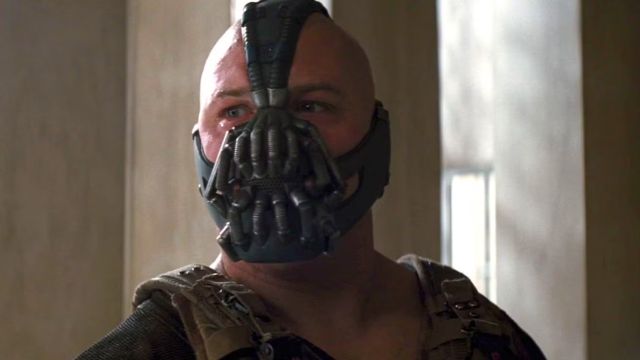Why Does Bane Wear the Mask in Dark Knight Rises?
Tom Hardy’s portrayal of Bane, a prominent DC villain who distinguishes out due to his constant mask-wearing, was first shown to audiences in The Dark Knight Rises. Batman has faced a wide range of antagonists in DC Comics, many of whom have also made an appearance in the several live-action Batman adaptations.
The Joker is arguably the most famous of these, but Bane, who debuted in Batman & Robin and had a second chance from Christopher Nolan in 2012’s The Dark Knight Rises, is another significant antagonist.
Christian Bale played the title character in Christopher Nolan’s Dark Knight trilogy, which included Batman Begins, The Dark Knight, and The Dark Knight Rises, giving Batman a new big-screen chance following the failure of Batman & Robin. Although Cillian Murphy’s Scarecrow made an appearance in all three installments, the Caped Crusader faced a different villain in each film.
The Dark Knight Rises, on the other hand, brought Bane back to theaters in a much darker and more grounded manner than Schumacher had previously, giving him a new origin story and a new reason to don his now-iconic mask.
For Dark Knight Rises, Nolan Changed Bane’s Mask and Storyline
In a flashback, Bane helps Talia al Ghul during escape the Pit, a subterranean prison where they are both being imprisoned, but is attacked for doing so. This is the only time in The Dark Knight Rises that Bane is not seen wearing the mask. Although the film never reveals Bane’s past or true name, Nolan told Rolling Stone that the mask uses an anesthetic to keep Bane’s pain under control. The flashback sequence explains why this is necessary because Bane suffered severe injuries in the attack in the Pit.
Bane’s mask’s function in The Dark Knight Rises was drastically altered by Nolan from its DC Comics origins. In the comics, Bane was given the Venom steroid while he was imprisoned. Although he nearly died as a result, he discovered that the medicine made him stronger physically, but he had to take it every twelve hours.
The mask served to protect the tubes that carried the medication, which went straight into his brain. Although the filmmaker decided to leave this out, perhaps in part to symbolize his life being confined to the Pit in this version of his biography, Nolan also altered the appearance of Bane’s mask. In the comics, Bane is Latinx, and his mask is modeled after luchadors, reflecting his cultural background.
Although Bane was a brilliant thinker with or without the Venom serum, his most distinctive physical trait is what made him so scary and, in the comics and Batman & Robin, the source of his physical power.
While adding an even more sad twist to his story, Christopher Nolan was able to preserve the core of Bane, his origin, and the mask’s purpose. The tone of Nolan’s Dark Knight trilogy, which opted for a more somber, gritty approach to Batman, Gotham City, and its antagonists, seemed appropriate for Bane’s new appearance.
Bane’s Voice Was Supposed to Be More Distorted by His Mask
In The Dark Knight Rises, Bane has a very unique voice that is thought to be warped due to the mask. Originally, Bane was supposed to have a deeper, raspier voice with additional respirator sound effects, similar to Darth Vader from the Star Wars film series.
This voice was altered, nevertheless, because test audiences unable to comprehend the antagonist, therefore rendering Bane an unfeasible and significant menace because he was incomprehensible.
Nolan re-recorded Bane’s voice for The Dark Knight Rises before the movie’s general theatrical release, settling on a threatening and ominous tone that was more appropriate for the role.
Take a look at the detailed examination of Tom Hardy’s famous portrayal of Bane in The Dark Knight Rises, including the intriguing modifications made to his voice and mask!
For an in-depth examination of Bane’s character development and influence on the Batman franchise, visit our website to discover more about his transition from comics to the big screen.



Comments are closed.